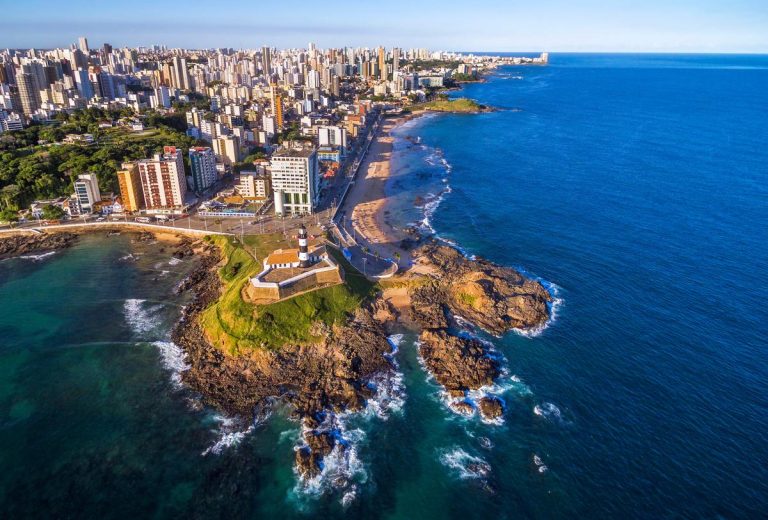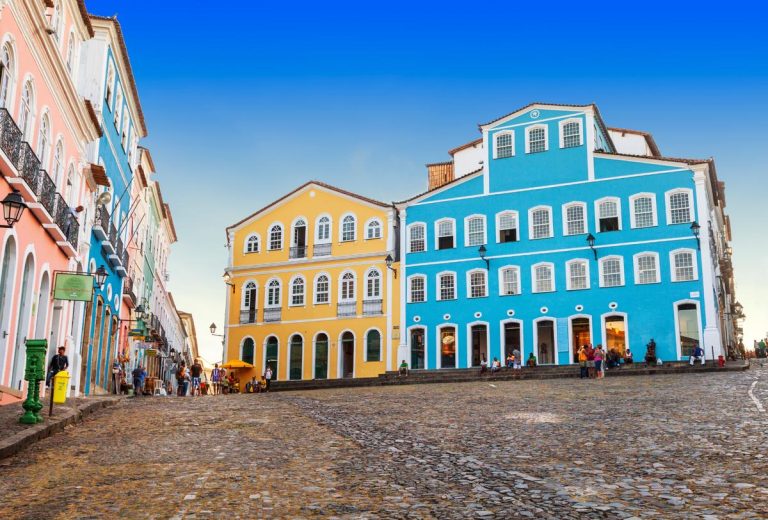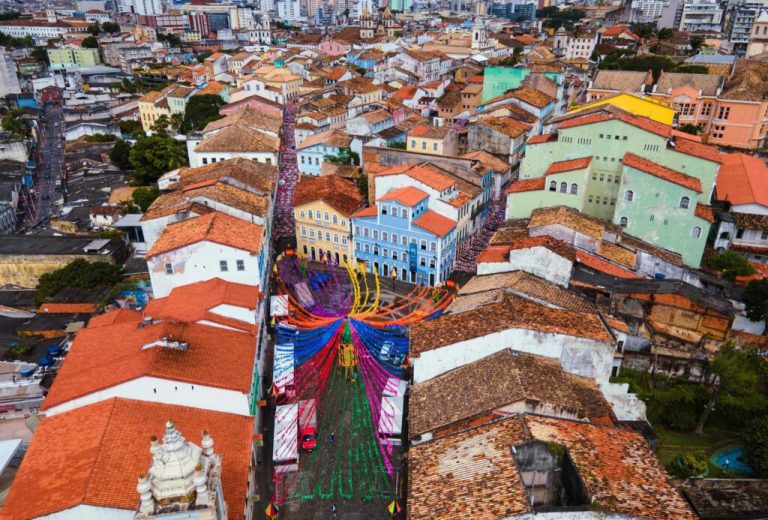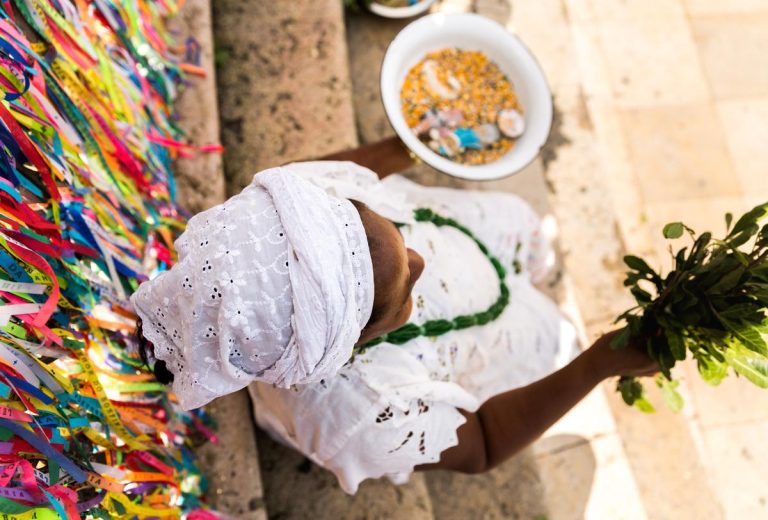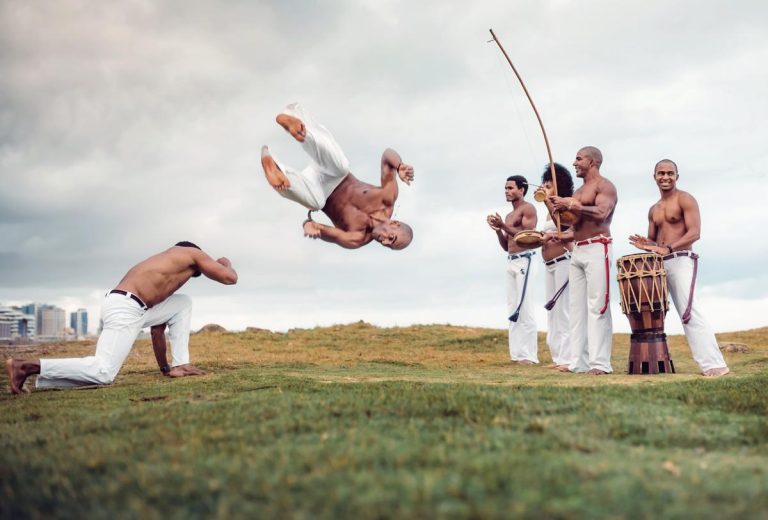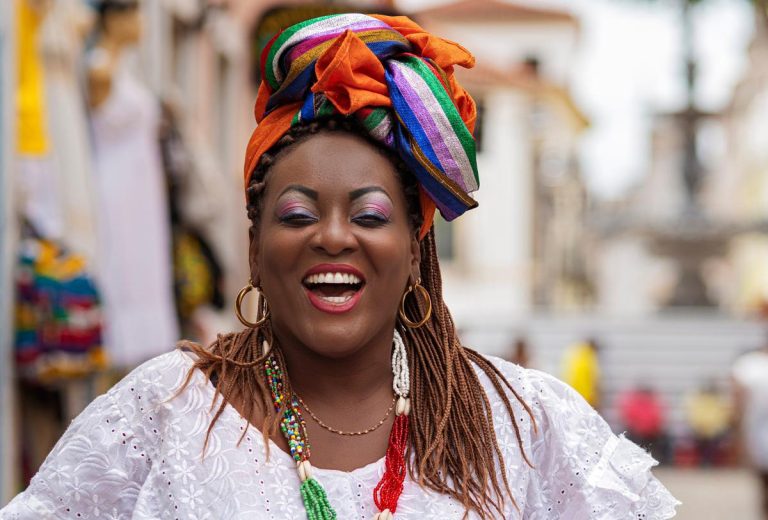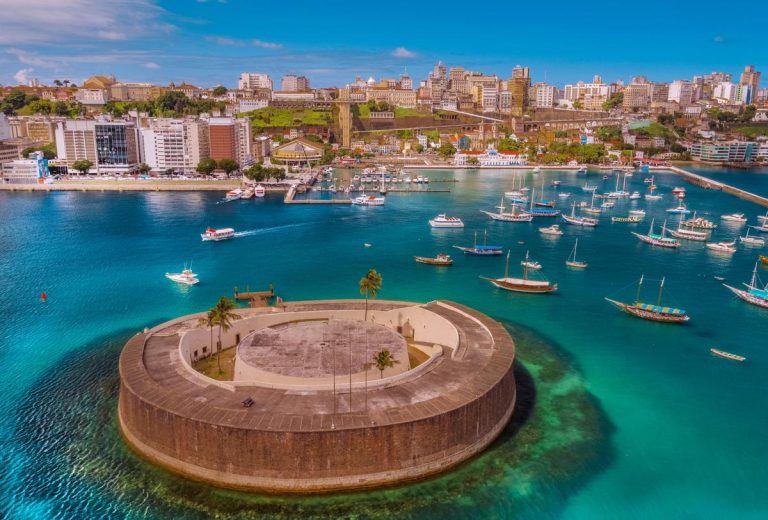Salvador: A Fusion of History, Culture and Tradition
Visiting Salvador, Brazil’s former colonial capital, is fun and interesting. Excitement pours from the historic center of this city (the Pelourinho) with the sounds of lively Brazilian music and drum corps overlapping from its squares, restaurants, and street performers. Salvador is Brazil’s third most visited location – behind Rio de Janeiro… for some good reasons.
The Afro-Brazilian Bahia culture in Salvador is heavily influenced from decedents of the large number of slaves brought from western Africa during Portuguese colonial times. This is reflected in the music, food, dance, entertainment, art, folklore, religion, and most importantly, the people. Unlike what happened in other slave territories around the world, due the very large numbers of slaves imported, they were able to maintain much of their culture. Salvador today offers a unique tourist experience to experience this Afro-Brazilian mix of European and African cultures.
Salvador Aerial
Salvador is one of the oldest cities founded by Europeans in the Americas and was Brazil’s Portuguese colonial capital for three centuries. A huge amount of gold, sugar, and tobacco was brought through it and Salvador became very wealthy. It is now a living museum of 17th and 18th-century architecture. Recovering from urban decline that affected many colonial cities in South America, repairs and interesting tourist attractions have been underway everywhere – Salvador is ready for visitors!
Salvador’s cobblestoned central old town, Pelourinho, is the place to be. It is a UNESCO World Heritage site and music is everywhere. This area is not large so wandering around is easy and fun. People watching is great here. Salvador’s main square in the Pelourinho, Terreiro de Jesus, is surrounded by bars and sometimes has performers during the day. Taxis can be found here. It leads into our favorite square, Largo do Cruzeiro de Sao Francisco that has restaurants where you can sit outside and enjoy music with the beautifully lighted Sao Francisco church. You should try a unique Bahia dish such as Moqueca, a rich fish stew.
Three of Salvador’s squares have been set up with stages offering music shows many days. Largo Pedro Arcanjo and Largo Tereza Batista are accessed from the streets Gregorio De Matos and Largo Quincas Berro D’Agua from Rua V.C. Rarelo. The shows are often free or have small cover charges (unless a big name band comes in). You can stand and dance or sit at a table enjoying a drink or meal at several restaurants.
Pelourinho
Pelourinho
Religion was a big part of colonial life and it is said this Bahia region of Brazil has so many churches that you could visit a different one every day of the year. Quite a number are located in Salvador. You should plan a visit to Sao Francisco Church showcasing Portugal’s colonial wealth in Salvador Brazil. Finished in 1723, it is possibly one of the most ornately ornamented churches in the world with its almost ton of gold decorations covering the inside – amazing!
Salvador’s Afro-Brazilian carnival is a huge party attracting up to 2 million visitors. Interested in the history of carnival in Brazil? Do plan a visit to Salvador’s Museu do Carnaval. The history and excitement of this amazingly exciting experience is captured well with video displays showcasing the music, history, and crowds that are uniquely Brazil. We found ourselves dancing while watching. This museum is located behind the Cathedral Basilica off Praca da Se.
The hour-long cultural show Bale Folclorico da Bahia is an interesting experience in Salvador showcasing unique Bahian music and dance. The show starts out slow with African-based song and dance reflecting mythology – the African ‘gods’ of the Candomble religion still practiced by many in Bahia. This leads up to an exciting display of lively Samba and Capoeira, the martial arts form of dancing practiced by slaves to stay fit and prepare for possible uprising from their masters. The show ends with an uplifting samba dance that was done by slaves.
Traditions
Traditions
Salvador also offers some fun beach experiences. Praia Porto da Barra (close town beach) is nice. You can rent chairs and an umbrella for about $5 and nice affordable drinks and food are available right on the beach. It is very popular (crowded) on the weekends. Barra is a short taxi ride from Pelourinho. Fans of nautical history, don’t miss the well-done Museu Nautico da Bahia here. The new large shopping center, Shopping Barra, is located here with upscale fashions and restaurants – nice place! Try the tasty cheese (Queijo Assado) they roast on the beach. Sipping a caipirinha is a thing to do in Brazil and can be done in many favors.
For less crowded beach experience, we enjoyed the 40-minute ferry ride to Mar Grande on the island of Itaparica. The beach there has three restaurants where you can sit right on the beach with your feet in the sand and enjoy drinks, food, music, and take a dip in the ocean to cool off. The ferry is located in lower city near Salvador’s Mercado Modelo accessed by the Elevador Lacerda. Praia do Forte is a very nice beach located about 1 ½ hours drive from Salvador.
Public transportation is good and safe in Salvador – a car rental will make your visit stressful. We found the taxis to be professional and very reasonable. If you are looking for fun Brazilian souvenirs from local crafts people, the Mercado Modelo is the place to go.
Brazilian people
A note about the Brazilian people… The people of Brazil exhibit a zest for life with their love for friends, family, music, food, and laughter. Their willingness to be friends with you was shown throughout our visit. A friendly smile is almost always returned in kind and they often go out of their way to help you. We can learn a lot from Brazilians. Portuguese is spoken in Brazil. You will encounter some English, especially in hospitality. Due to the similarities of Portuguese with Spanish and the fact that most the rest of the South American continent speaks Spanish, we found trying some Spanish worked well in many cases.
Some history of Salvador… In 1549, the Portuguese came to Salvador to set up Brazil’s first capital. For three centuries, huge wealth was taken from this area in the form of sugarcane, tobacco, cattle, gold, and gems. Salvador became one of the richest cities in South America. A large slave population was used to extract this wealth – so big slaves made up half Salvador’s population.
In 1763, with the decline of the sugarcane industry, the capital was moved to Rio de Janeiro and Salvador went into decline until recently. Since 1993, with UNESCO and other funding, a very noticeable revival of this once great city has come about.
forte de sao marcelo salvador
In conclusion, Salvador is a city that enchants with its history, unique culture, and vibrant energy, offering visitors an authentic and unforgettable experience, where the beauty of Afro-Brazilian traditions blends with the charm of its colonial past, creating an atmosphere that will remain in the heart of anyone who visits.
Don’t miss updates, news, and information on port calls on Cruising Journal.

